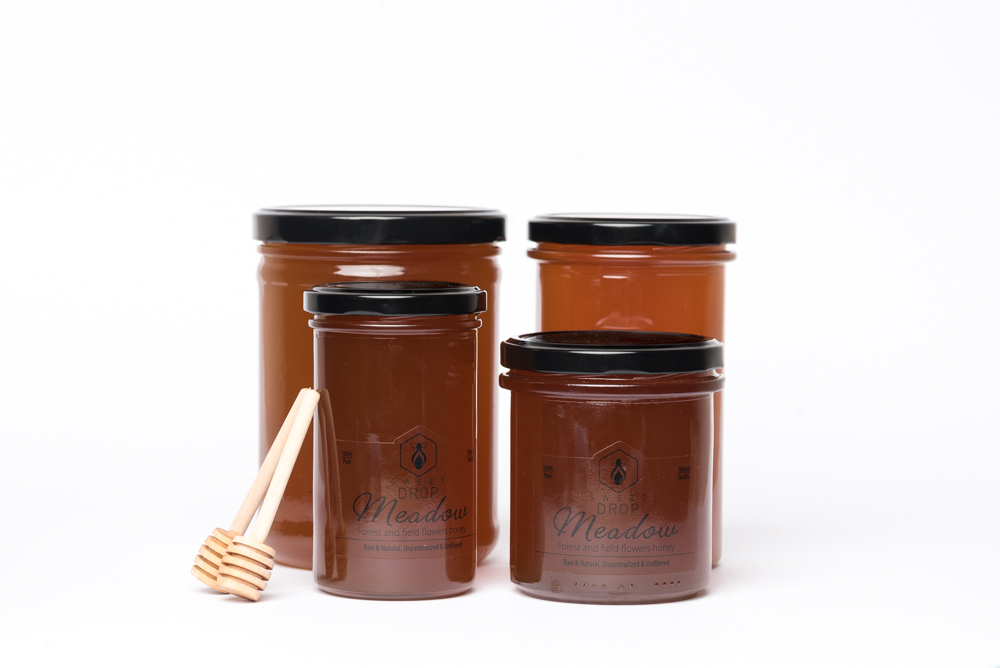Natural Honey from the Sweet Drop Apiary is sweet, fragrant, can be light, amber in color and dark. Unlike light honey, dark honey contains 4 times more iron, 2 times more copper and 14 times more manganese. Buckwheat honey contains 25 times more minerals than Lucerne honey.
The color of honey depends on iron, copper, manganese and other macro and micro elements, as well as other substances – carotenoids, flavonoids, chlorophylls, etc.
Bees produce natural honey from the nectar of the flowers. Honey containing up to 20% water is ripe and is covered by beeswax lids in honeycombs. Only mature honey can be unscrewed.
White and pink clover, canola, melilot honey contain less coloring matter, but this honey is very valuable due to other characteristic. It is very suitable for people with allergies and children.
The smell of natural honey depends on the flavorings obtained from nectar and from organic matter by the action of bee enzymes.
The odor is reduced by prolonged storage, heating or storage of honey at high temperatures.
Honey can be:
- Clearly sweet (buckwheat, white acacia)
- Sweet (most plants)
- Moderately sweet (honeydew honey)
Honey spice:
- Soft – raspberry, clover honey
- Pleasant, but not spicy – linden honey
- Bitter, spicy – chestnut, tobacco honey
The types of honey depend on the flowers from which the honey is collected. Natural honey of the same botanical origin harvested in the spring is of a higher quality than honey harvested in the fall.
Fresh honey is thick, dense, transparent, but over time it hardens – crystallizes, but its quality does not deteriorate.
The composition of real, natural honey includes up to 400 different components:
Chemical elements in honey – sodium, potassium, manganese, phosphorus, selenium, copper, iron, magnesium, chromium, zinc. Vitamins in honey – B1, B2, B6, PP, B3, H.
According to J. Puišys, honey has immunobiological, stimulating and anti-allergic properties. Honey also has a preservative, antibacterial, anesthetic (analgesic) effect.
Honey helps to heal wounds (stimulates the growth of granulation tissue), stimulates growth. Actively affects bacteria and microorganisms.
To preserve the quality of honey, it must be stored in glass tightly closed containers in a dark, well-ventilated room.



